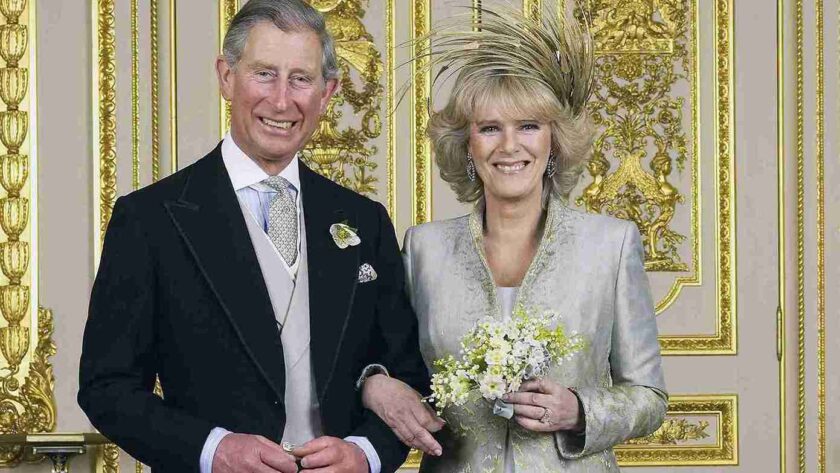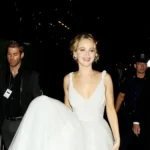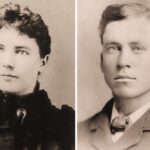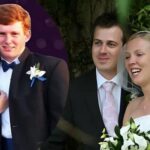The Camilla and Charles wedding broke royal tradition with its remarkably intimate guest list of just 28 people, making it Britain’s most private royal ceremony in modern history. While most royal weddings draw thousands of spectators and hundreds of guests, this historic union on April 9, 2005, took a different approach.
In fact, the Camilla and Charles wedding consisted of two distinct ceremonies: a civil service at Windsor Guildhall followed by a religious blessing at St. George’s Chapel. Prince Charles and Camilla wedding marked a significant moment that came 35 years after their first meeting, with Queen Elizabeth and Prince Philip attending only the religious blessing ceremony. The Charles Camilla wedding reflected their desire for privacy, eschewing the usual grand royal traditions, including Camilla’s choice to forgo a tiara for her bridal look.
This detailed account takes readers behind the palace doors to reveal the careful preparations, intimate moments, and historical significance of Prince Charles and Camilla wedding day that transformed the future King and Queen of England’s decades-long relationship into a royal marriage.
Contents
- 1 Early Morning Preparations at Windsor
- 2 The Civil Ceremony Setup
- 3 Inside the Private Civil Service
- 4 Moving to St George’s Chapel
- 5 The Religious Blessing Ceremony
- 6 Camilla And Charles Wedding Frequently Asked Questions
- 6.1 Why did Camilla and Charles choose to marry in a civil ceremony?
- 6.2 Was Camilla’s wedding dress significant in any way?
- 6.3 How did the British public react to Camilla and Charles’s wedding?
- 6.4 Why was Camilla’s role in the royal family controversial after the wedding?
- 6.5 How did the Charles and Camilla wedding differ from other royal weddings?
- 6.6 What role did Camilla play at Charles and Diana’s wedding?
Early Morning Preparations at Windsor
Dawn broke over Windsor Castle as preparations for the Camilla and Charles wedding sparked into action. The Master of the Household Department orchestrated a carefully planned symphony of activities, marking the start of this historic day.
Royal household staff preparations
The Prince Charles and Camilla wedding presented unique challenges for the royal household staff. A team of dedicated professionals managed both the private nature of the ceremony and Camilla’s unexpected health concerns. Subsequently, close friend Lucia Santa Cruz stepped in with homemade chicken soup to help the bride-to-be recover from a serious bout of sinusitis.
The Lord Chamberlain’s Office, responsible for ceremonial activities, coordinated with multiple departments to ensure smooth operations. Meanwhile, crowds had gathered on Windsor’s streets since daybreak, adding another layer of complexity to the staff’s duties.
Security arrangements
The Camilla Charles wedding demanded an extensive security operation. Thames Valley Police implemented a comprehensive strategy that included:
- Explosive sweeps along the route from Windsor Castle to the Guildhall
- Mounted officers patrolling central Windsor
- Strategic road closures within the town center
Additionally, hundreds of uniformed police officers maintained vigilance while snipers took positions on rooftops. The security arrangements became particularly crucial after the venue change from Windsor Castle to the Guildhall, creating a new challenge of protecting the wedding party during their mile-long journey through town.
The prince Charles and Camilla wedding security operation faced added pressure when a tabloid newspaper exposed potential vulnerabilities by driving into Windsor Castle with a fake bomb. Notably, less than two hours before the Camilla and Charles wedding ceremony, several thousand well-wishers lined the picturesque streets, waving Union Jack flags under blue skies.
The security teams maintained a delicate balance between ensuring safety and preserving the celebratory atmosphere of this intimate royal occasion. Officers conducted airport-style security scanning and bag searches for all guests and spectators.
The Civil Ceremony Setup
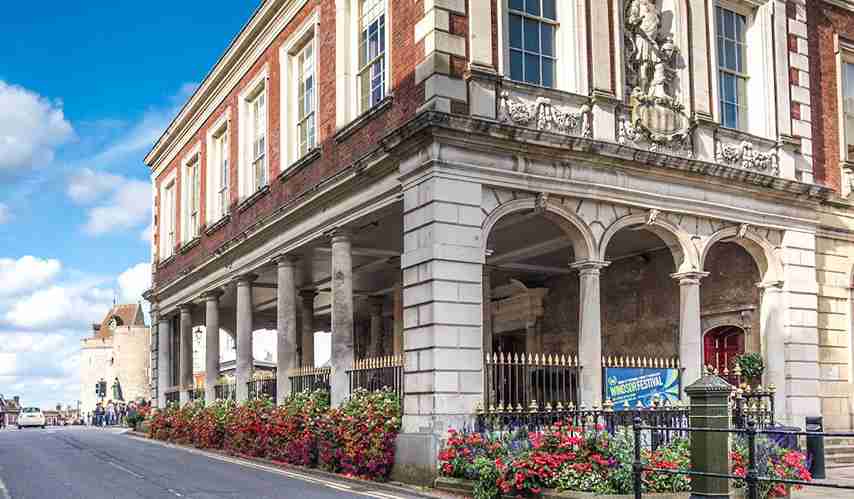
Inside the magnificent 17th-century Windsor Guildhall, final preparations unfolded for the Camilla and Charles wedding. The historic venue, standing just meters from Windsor Castle’s entrance, underwent a remarkable transformation for this intimate royal occasion.
Windsor Guildhall transformation
The Prince Charles and Camilla wedding venue choice came after a significant change in plans. Originally scheduled for Windsor Castle, the ceremony moved to the Guildhall after discovering that licensing the castle for civil weddings would require opening it to public ceremonies for three years. The majestic chamber, is adorned with these striking features:
- Ornate gold leaf detailing
- Crystal chandeliers
- Grand royal portraits
- Massive windows flooding natural light
- Covered outdoor area
The Camilla Charles wedding preparations transformed this already stunning space into an even more intimate setting. The chamber’s impressive collection of royal portraits provided a fitting backdrop for this historic union.
Guest arrival coordination
For the Prince Charles and Camilla wedding, precise timing became essential as coaches and limousines arrived at scheduled intervals throughout the morning. The couple chose the Queen’s Rolls Royce – the same vehicle used at Prince Edward and Sophie’s wedding – for their own arrival.
The Charles Camilla wedding guest list remained exceptionally selective, with just 28 attendees carefully coordinated to arrive at the Guildhall. Among these chosen few were Charles’s siblings – Princess Anne, Prince Andrew, and Prince Edward – alongside Princes William and Harry. Camilla’s children, Tom Parker Bowles and Laura Lopes, furthermore joined this intimate gathering.
The Camilla and Charles wedding coordination required meticulous planning, specifically as crowds had gathered since dawn to witness this historic moment. Consequently, the Guildhall staff orchestrated a seamless flow of arrivals, primarily focusing on maintaining privacy while acknowledging the public’s presence outside. The ceremony was scheduled for 12:30 PM BST, allowing ample time for guest arrivals and seating arrangements.
Inside the Private Civil Service
At precisely 12:30 PM BST, an extraordinary moment unfolded as the Camilla and Charles wedding ceremony commenced within Windsor Guildhall’s historic walls. The Prince Charles and Camilla wedding defied royal traditions with its remarkably selective attendance list.
The 28 chosen guests
The intimate gathering primarily consisted of close family members. Among the distinguished guests were:
- Charles’s siblings – Princess Anne, Prince Andrew, and Prince Edward
- Both princes – William and Harry
- Camilla’s children – Tom Parker Bowles and Laura Lopes
Moreover, this Camilla Charles wedding marked a significant departure from royal protocol, as Queen Elizabeth and Prince Philip chose not to attend the civil ceremony. Their absence, altogether respectful of the couple’s wishes, emphasized the private nature of this historic union.
Prince William as witness
Prince William’s role as a witness at the Prince Charles and Camilla wedding carried profound significance. The future heir demonstrated his support by accepting this essential responsibility, and sharing witness duties with Tom Parker Bowles, Camilla’s son.
William’s involvement extended beyond mere formality. Observers noted his careful attention to detail as he checked his pocket repeatedly, ensuring the safekeeping of the rings, essentially the Welsh gold band destined for his future stepmother. This touching gesture highlighted the personal nature of this Charles Camilla wedding ceremony.
The Camilla and Charles wedding witnesses, William and Tom, symbolized the merging of two families through their shared duties. Their joint participation represented a harmonious blend of the royal household with Camilla’s family, creating an atmosphere of unity and acceptance within the intimate gathering.
The civil service proceeded with dignity and precision, marking the culmination of a relationship that had spanned decades. Each of the 28 guests present witnessed a moment of profound personal significance for the future King and Queen, as they finally formalized their enduring bond within the historic confines of Windsor Guildhall.
Moving to St George’s Chapel
Following the intimate civil ceremony, the historic Camilla and Charles wedding procession faced its most complex phase. The journey between Windsor Guildhall and St. George’s Chapel required meticulous planning, with more than 3,000 officers deployed in Thames Valley force’s largest operation.
Logistics between venues
The Prince Charles and Camilla wedding presented unique challenges due to Windsor’s medieval layout. The town’s confined streets, with tightly packed apartments and cobbled pathways, required careful consideration. Security teams established multiple checkpoints along the route, therefore implementing comprehensive measures:
- Automatic Number Plate Recognition systems
- Strategic security camera placement
- Heavy security barriers for vehicle threat mitigation
- A 48-hour no-fly zone around Windsor
- Marine police patrols on the Thames
The Charles Camilla wedding route underwent thorough explosive sweeps, accordingly ensuring the safety of both the royal couple and spectators. Armed officers maintained positions throughout protected areas, nevertheless preserving the ceremonial atmosphere of this historic occasion.
Crowd management
As the Camilla Charles wedding preparations unfolded, police anticipated crowds exceeding 100,000 people. The prince Charles and Camilla wedding security operation incorporated sophisticated crowd management techniques, with officers embedded within the gathering masses.
Thames Valley Police implemented contingency measures, including emergency evacuation routes and designated safety zones for families with young children. The operation’s scale demanded support from multiple forces, as a result bringing in additional units from the Metropolitan Police and British Transport Police.
Public safety remained paramount, with authorities prepared to halt train services to Windsor if crowd sizes posed risks. Every person entering the processional route underwent airport-style security screening. The current threat level remained at ‘severe,’ prompting heightened vigilance across all security tiers.
The Camilla and Charles wedding security operation demonstrated unprecedented coordination between various law enforcement agencies. Police commanders utilized advanced crowd science principles, implementing lessons from a specialized Event Module training course designed for senior officers. This comprehensive approach ensured both the safety of the royal couple and the thousands of well-wishers who lined Windsor’s historic streets.
The Religious Blessing Ceremony
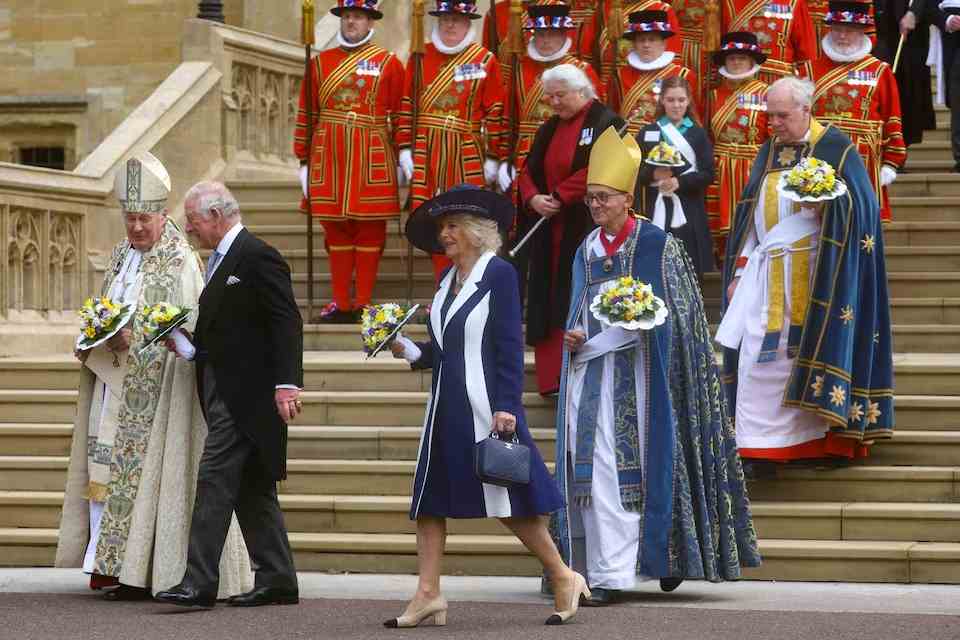
St. George’s Chapel at Windsor Castle transformed into a sacred space for the religious blessing of the Camilla and Charles wedding. The historic venue welcomed 800 distinguished guests, marking a stark contrast to the intimate civil ceremony earlier that day.
Queen’s arrival
Breaking from traditional protocol, Queen Elizabeth II and Prince Philip arrived after their son rather than before him. The Queen’s presence at the blessing ceremony held profound significance, particularly as she had chosen not to attend the civil service. Her arrival, accompanied by the Duke of Edinburgh, signaled the monarchy’s formal recognition of this historic union.
Prince Charles and Camilla’s wedding blessing drew the entire royal family together under the chapel’s Gothic arches. The Queen’s attendance furthermore demonstrated her support for the couple, despite her absence from the earlier proceedings.
Archbishop’s special service
Archbishop of Canterbury Rowan Williams led an extraordinary service that balanced traditional elements with deeply personal moments. The Prince Charles and Camilla wedding blessing incorporated one of the strongest acts of penitence from the 1662 Book of Common Prayer. Indeed, the couple knelt beneath the towering arches, making their solemn declarations.
The Charles Camilla wedding service included these remarkable elements:
- A confession prayer written by Thomas Cranmer, Archbishop of Canterbury to King Henry VIII
- Special blessings from Archbishop Williams
- Traditional hymns performed by the Chapel’s choir
The Camilla Charles wedding blessing saw the couple openly acknowledge their past through carefully chosen prayers. They recited together: “Heavenly Father, we offer thee our souls and bodies, our thoughts and words and deeds, our love for one another”. This moment of spiritual significance resonated throughout the chapel, as the Archbishop blessed their union.
The religious ceremony represented the Church of England’s formal recognition of their marriage. Archbishop Williams had strongly supported these arrangements, deeming them “consistent with the Church of England guidelines concerning remarriage”. Rather than a traditional church wedding, this format of civil ceremony followed by religious blessing was ultimately agreed upon as the most appropriate choice.
Prime Minister Tony Blair joined the congregation of 800 guests, undoubtedly adding to the ceremony’s historical weight. Certainly, the presence of such distinguished attendees, including Camilla’s former husband Andrew Parker Bowles, spoke to the remarkable nature of this royal occasion.
The blessing ceremony, broadcast live to the nation, allowed the public to witness this significant moment in royal history. St. George’s Chapel’s Gothic grandeur offered a majestic setting for Camilla and Charles’ final sacred wedding moment.
Camilla And Charles Wedding Frequently Asked Questions
Why did Camilla and Charles choose to marry in a civil ceremony?
Camilla and Charles’s decision to marry in a civil ceremony was influenced by their personal circumstances as a divorced couple, which made a traditional church wedding difficult. This marked a departure from royal tradition, as the Church of England does not typically recognize the remarriage of divorced individuals without a special blessing. By opting for a civil ceremony followed by a religious blessing, they were able to reconcile their private wishes with public expectations.
Was Camilla’s wedding dress significant in any way?
Camilla’s wedding dress was notably understated for a royal wedding. Unlike many royal brides, she chose not to wear a tiara, which made her wedding attire distinct from royal expectations. Designed by Anna Valentine, the dress featured a soft blue and silver color scheme and was elegantly simple, reflecting Camilla’s desire for a low-key wedding. Her choice to avoid a tiara also signaled her break from traditional royal wedding norms.
How did the British public react to Camilla and Charles’s wedding?
The British public’s reaction to the Camilla and Charles wedding was mixed. While many welcomed the union after years of speculation about their relationship, others criticized the couple, especially in light of their previous marriages. Despite these controversies, the ceremony still garnered widespread media coverage, and thousands of well-wishers lined the streets to celebrate their wedding. The wedding’s privacy, with only 28 guests at the civil ceremony, also sparked much public curiosity and interest.
Why was Camilla’s role in the royal family controversial after the wedding?
After Camilla and Charles married, there was some controversy over her role within the royal family. Many felt she was not as accepted by the public compared to Charles’s first wife, Princess Diana. However, over time, Camilla gradually became more integrated into royal duties and earned the respect of her peers and the British public, though her relationship with Diana’s legacy remained a topic of discussion.
How did the Charles and Camilla wedding differ from other royal weddings?
The Charles and Camilla wedding was unique for several reasons. First, it was a private affair with only 28 guests, making it one of the most intimate royal weddings in recent history. Furthermore, the wedding consisted of two parts: a civil ceremony followed by a religious blessing at St. George’s Chapel, diverging from the traditional royal wedding structure. This format reflected the couple’s desire for privacy and their need to honor both their past relationships and their future roles in the monarchy.
What role did Camilla play at Charles and Diana’s wedding?
Camilla at Charles and Diana’s wedding was a notable and somewhat controversial figure, though she was not officially invited. At the time, Camilla was married to Andrew Parker Bowles, and her ongoing relationship with Charles played a role in the tensions surrounding his marriage to Diana. Her presence was felt more in the aftermath of the wedding, as public awareness of her connection to Charles grew. Over the years, Camilla at Charles and Diana’s wedding became an essential part of royal history, and her eventual marriage to Charles in 2005 marked a significant shift in her public role within the royal family.

